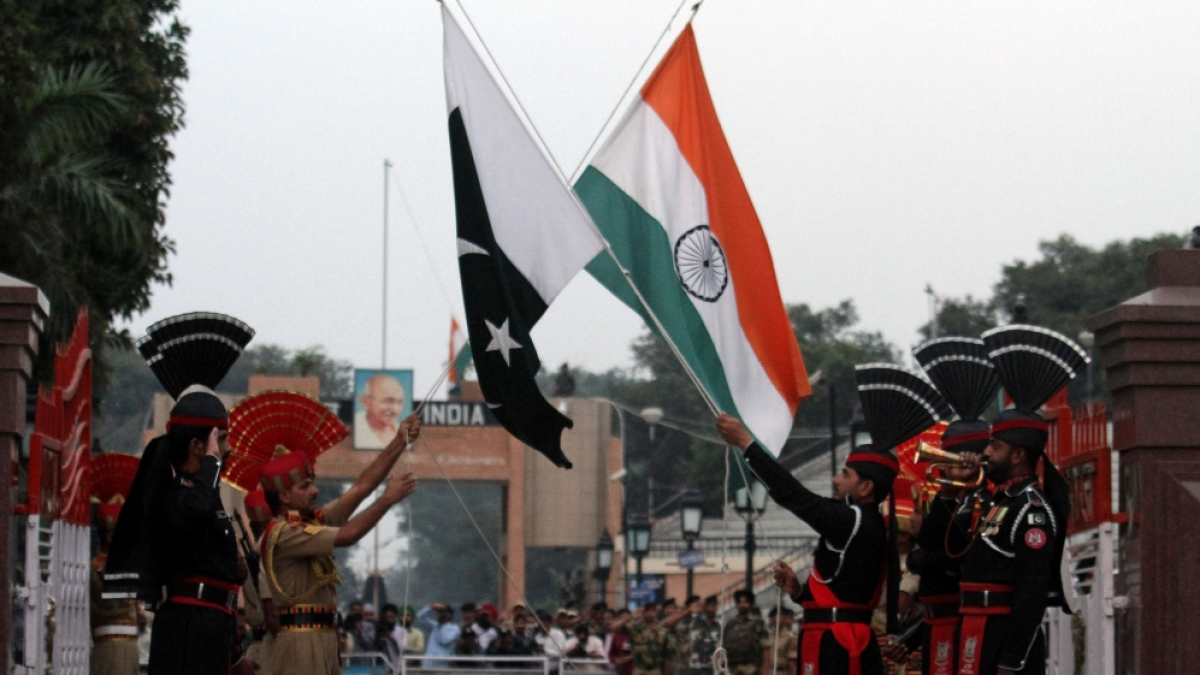
Europe reacts strongly to US proposals at the Asian gathering, highlighting the ongoing hostility between India and Pakistan
The Shangri-La Dialogue security meeting in Singapore has historically been characterized by U.S.-China rivalry; however, Beijing’s noticeable withdrawal over the weekend revealed a new divide—growing tensions between the U.S. and Europe regarding Asia.
In a speech on Saturday, U.S. Defense Secretary Pete Hegseth cautioned that China represented a “imminent” threat, while emphasizing the importance of European nations focusing on their own security as they increased military budgets.
“We would greatly prefer that the majority of European investment remains on that continent…so that as we continue to partner there, we can leverage our strengths as an Indo-Pacific nation to support our partners here,” he stated.
Hegseth also pointed out that his Chinese counterpart Dong Jun was not present, as Beijing chose to send a lower-level team of military scholars to the annual event, which draws prominent defence officials, diplomats, spies, and arms dealers from around the globe.
Another significant aspect of the event was the attendance of influential military delegations from India and Pakistan, following four days of intense clashes between the nuclear-armed neighbors, which were brought to a halt by a ceasefire on May 10.
The delegations, clad in full uniform and adorned with medals and service ribbons, were headed by India’s top military officer and Pakistan’s chairman of the joint chiefs of staff. They deliberately avoided each other in the corridors and meeting halls of the expansive Shangri-La hotel.
In their engagement with Asia, several European nations indicated that they would remain unaffected by the U.S. appeals.
They maintained their commitment to remain engaged in both the Asian and European theatres, highlighting their strong connections and essential trade routes, along with the worldwide implications of conflict.
“It is a positive development that we are increasing our efforts in Europe, but I want to emphasize that the security of Europe and the security of the Pacific are closely interconnected,” stated Europe’s leading diplomat Kaja Kallas.
“If you have concerns about China, you ought to be concerned about Russia,” Kallas emphasized, highlighting the significance of Chinese support for the Russian military campaign in Ukraine and Moscow’s use of North Korean troops.
FRANCE’S CONNECTIONS IN ASIA
French President Emmanuel Macron emphasized that his country continues to be an Indo-Pacific power, referencing its lasting colonial presence in New Caledonia and French Polynesia, as well as the deployment of more than 8,000 soldiers throughout the region.
“We are neither China nor the U.S.; we do not wish to rely on either,” Macron stated during a press conference on Friday, presenting a coalition of a “third path” between Europe and Asia that sidesteps the need to choose between Beijing and Washington.
“We aim to collaborate with both to the fullest extent possible, fostering growth, prosperity, and stability for our people and the global order. I believe many countries and individuals in this region share this perspective,” he stated.
Amid the discourse, military attaches and analysts in the region suggest that altering the European military presence and its ambitions may prove to be a challenging endeavor.
Military deployments are planned over long periods, often spanning decades, and the relationships in both commercial and defense sectors have deep historical roots, with many of them seldom recognized in public discourse.
The upcoming visit of a British aircraft carrier to Singapore later this month is part of a program initially highlighted by former Foreign Secretary Boris Johnson in 2017, aimed at emphasizing British commitment to freedom of navigation in the South China Sea.
The carrier visit partially demonstrates Britain’s obligations under the 54-year-old Five-Power Defence Arrangement, which connects its military with those of Singapore, Malaysia, Australia, and New Zealand.
The recent three-way AUKUS submarine and advanced technology sharing agreement with the U.S. has strengthened British ties with Australia, potentially allowing British submarines to visit Western Australia.
Singapore maintains 200 personnel in France, operating 12 of its light combat aircraft. Meanwhile, Britain has a jungle training camp and helicopters in Brunei, along with a Gurkha battalion consisting of 1,200 troops, as reported by the International Institute of Strategic Studies.
A report released last month by the London-based IISS emphasized the enduring and growing defense connections between European firms and Asia, despite the competition, especially from Saudi Arabia and the United Arab Emirates as regional budgets increase.
The IISS study noted that “European companies, including Airbus, Damen, Naval Group, and Thales, have a long-standing presence in Southeast Asia, while other European players, such as Italy’s Fincantieri and Sweden’s Saab, have entered the market over the past decade.”
Saab is nearing an agreement with U.S. ally Thailand to provide its Gripen fighters, surpassing Lockheed Martin’s F-16s in the process.
The Stockholm International Peace Research Institute has indicated that defense spending in Asia increased by 46% over the decade leading to 2024, totaling $629 billion.
Hegseth’s remarks struck a chord with Finnish officials; for Helsinki, it is Moscow that takes precedence over the Indo-Pacific, particularly due to the nation’s extensive border with Russia.
“When Europe’s defense is well-prepared, it will have the resources to pursue additional initiatives,” Finnish Defence Minister Antti Hakkanen stated to Reuters.
“However, it is essential for all European countries to prioritize European defense, allowing the United States to take on a larger role in the Indo-Pacific region,” Hakkanen stated.
All Categories
Recent Posts
Tags
+13162306000
zoneyetu@yahoo.com



